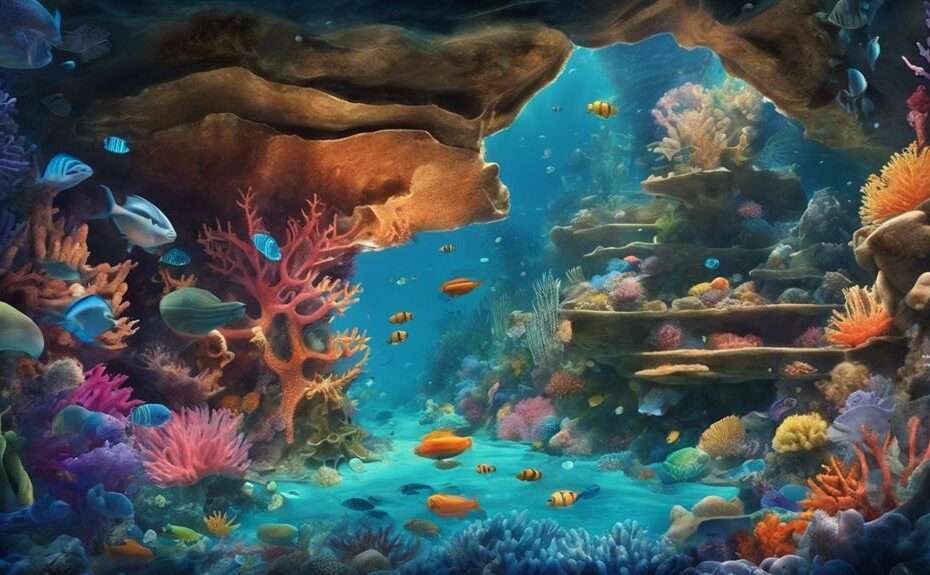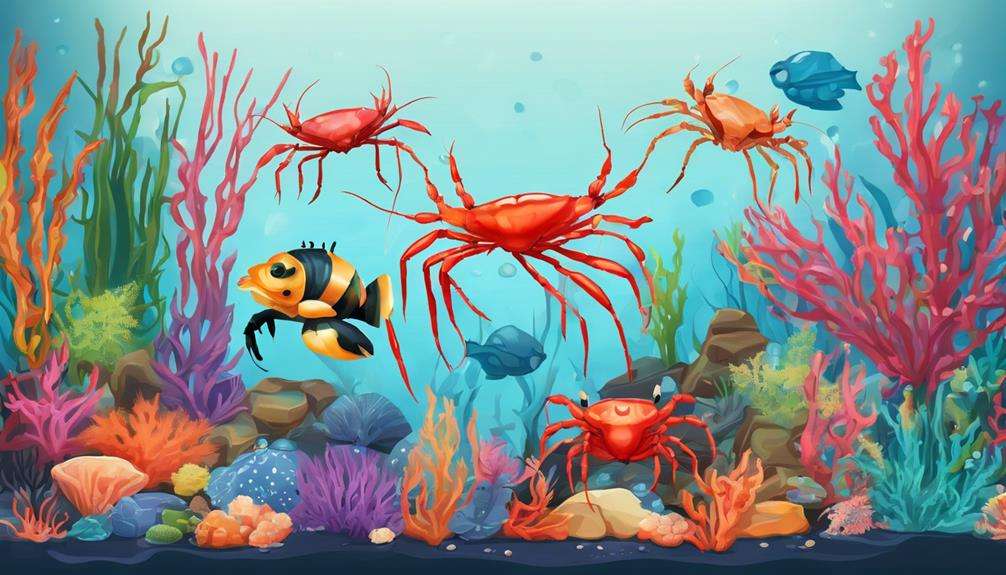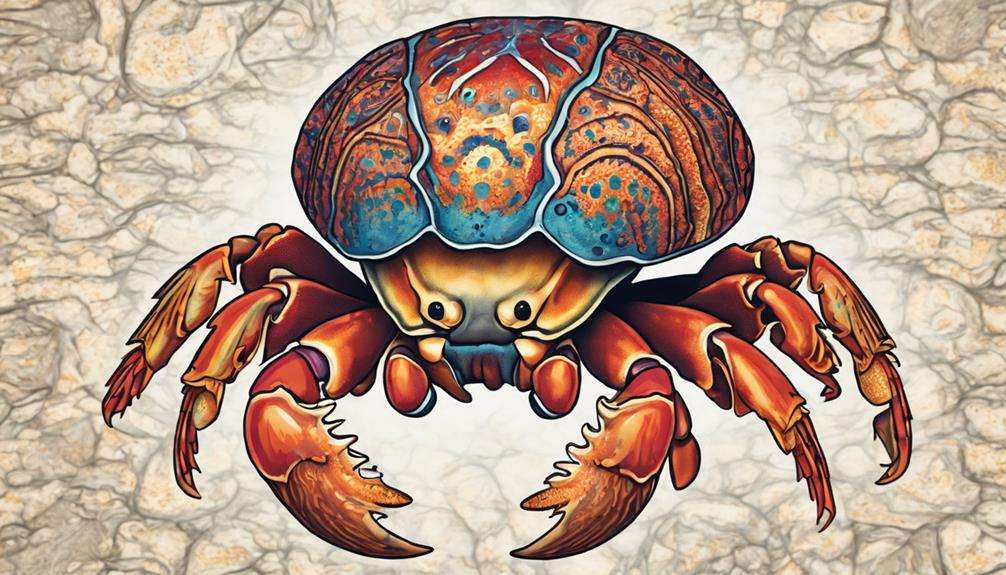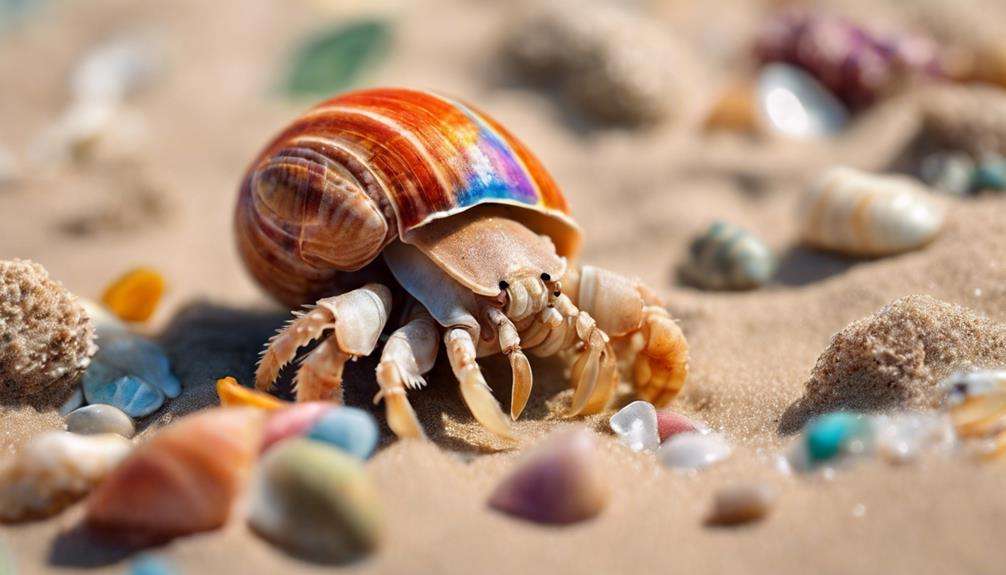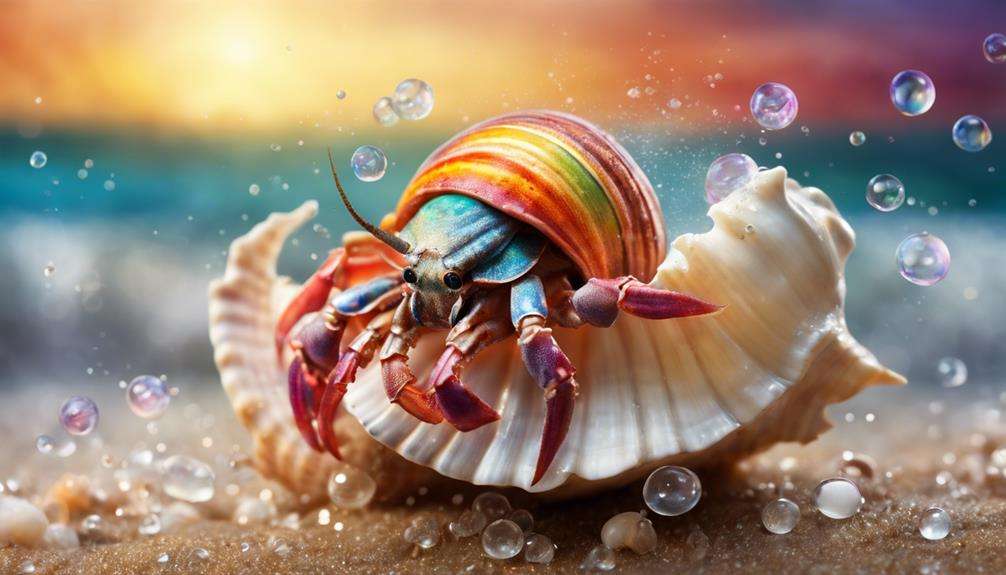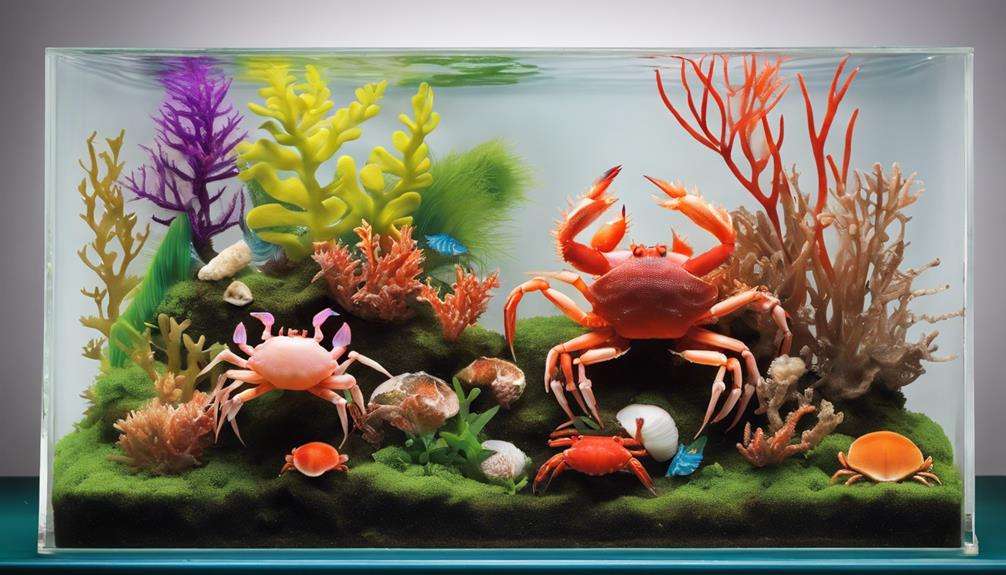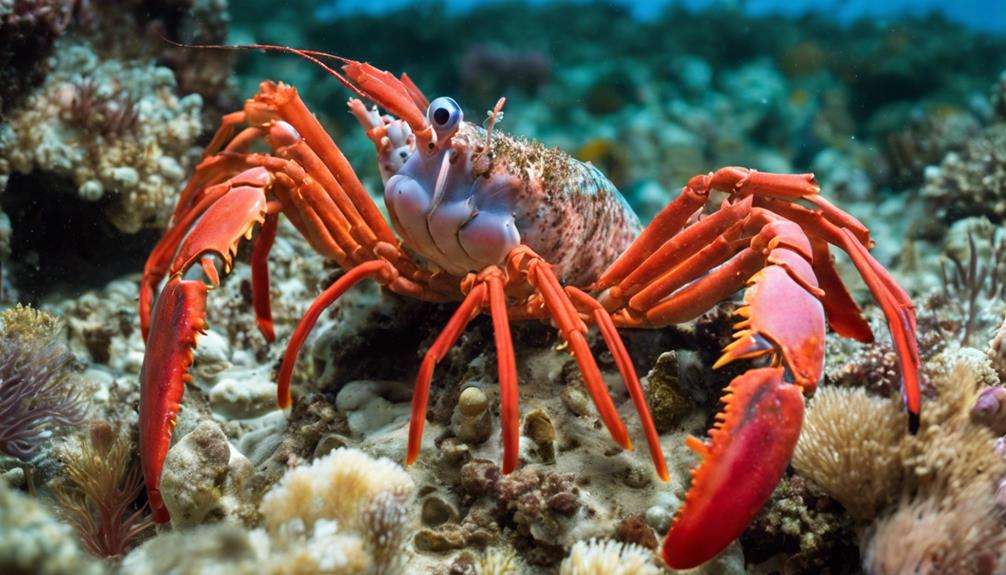When setting up a habitat for exotic crustaceans, you'll need to consider a myriad of factors to ensure their well-being. Paying attention to details such as tank size, water quality, and dietary needs is crucial.
But what about the less obvious aspects that can truly make a difference in their care? Stay tuned to discover the often overlooked elements that play a significant role in creating an optimal environment for these fascinating creatures.
Key Takeaways
- Tank size selection based on species size and number is crucial for exotic crustaceans' well-being.
- Habitat essentials like temperature, UVB lighting, substrate, and decor are vital for creating a specialized environment.
- Water quality management through pH levels, proper filtration, and regular monitoring is essential for exotic crustaceans' health.
- Nutrition, health monitoring, optimal humidity levels, and breeding conditions play key roles in maintaining a specialized environment.
Selecting the Perfect Tank Size
When considering the ideal tank size for housing exotic crustaceans, it's crucial to select a tank ranging from 5 to 20 gallons based on the specific size and number of crab species you intend to accommodate. Different crab species vary in size and territorial behavior, influencing the space requirements. Larger crab species or a higher number of individuals will necessitate a larger tank size to provide adequate space and prevent aggression due to overcrowding. The tank size should also consider the space needed for decor, filtration systems, heating equipment, and other essential features to maintain a suitable environment for the crab species.
A larger tank not only accommodates the physical needs of the crab species but also allows for the creation of a diverse and enriching habitat. It provides more room to incorporate various hiding spots, substrate types, and features that mimic the natural environment of the crab species. Ensuring the tank size permits proper water quality maintenance, adequate swimming space, and opportunities for the crab species to exhibit their natural behaviors is paramount for their health and well-being.
Ideal Temperature and Lighting Conditions
To ensure the optimal environment for your exotic crustaceans, maintaining ideal temperature and lighting conditions is essential for their health and well-being. Red-clawed crabs, for instance, thrive in water temperatures ranging between 75-82°F. UVB lighting plays a crucial role in providing the necessary UV radiation for calcium metabolism and overall health in these crustaceans. It's important to avoid direct sunlight on the tank to prevent overheating and to keep the temperature stable.
Using a timer to regulate lighting cycles can help mimic natural day and night patterns, which is beneficial for the well-being of your red claw crabs. Additionally, it's crucial to ensure there's a proper basking area with a heat source for crustaceans that require specific temperature gradients. By creating a specialized environment with the right temperature and lighting conditions, you can ensure the health and vitality of your exotic crustaceans, particularly red-clawed crabs.
Essential Substrate and Decor
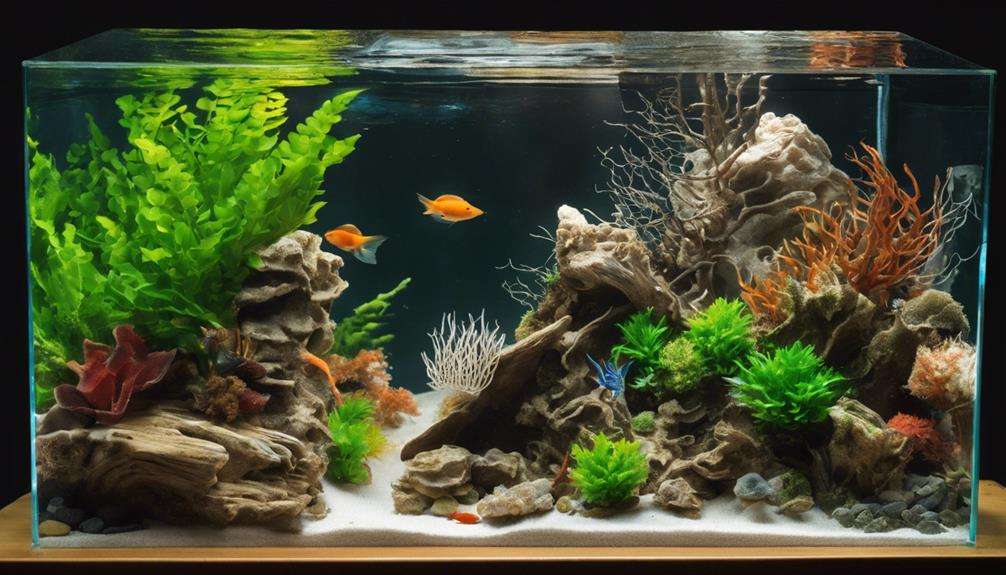
When setting up the specialized environment for your exotic crustaceans, your choice of substrate plays a crucial role in mimicking their natural habitat. Utilize sand or fine gravel to replicate the conditions favored by species like fiddler crabs and red claw crabs.
Incorporating tank decor such as driftwood, rocks, and caves not only provides shelter but also enriches the environment for your exotic crustaceans.
Substrate Choices for Habitat
Utilizing appropriate substrates and decor is crucial for creating a specialized environment that meets the habitat requirements of exotic crustaceans. When choosing substrate choices for your exotic crustaceans, consider the following:
- Sand: Ideal for burrowing species like fiddler crabs, providing a natural digging medium.
- Coconut Fiber: Helps retain moisture and maintain humidity levels, suitable for species requiring higher humidity.
- Mix of Both: Creating a varied terrain by combining sand and coconut fiber can promote natural behaviors and offer enrichment opportunities for the crustaceans.
Importance of Tank Decor
Creating an enriched environment for exotic crustaceans necessitates careful selection and placement of tank decor. Essential substrate and decorative elements should mimic their natural habitats and cater to their behavioral needs.
For optimal tank decor, choose sand, pebbles, or a mix as substrate to offer burrowing opportunities for crabs, replicating their natural environment. Enhance the tank with driftwood, rocks, and caves to provide hiding spots and climbing areas for mental stimulation and exercise.
Including live or artificial plants not only improves aesthetics but also creates a more natural setting for the crabs. Ensure a beach-like corner with a gentle slope for easy access in and out of the water, encouraging exploration and foraging behaviors.
Variety in textures, shapes, and sizes of decor promotes natural behaviors like digging, climbing, and exploring in the tank.
Water Quality and Filtration System
To maintain optimal water quality for exotic crustaceans, ensure that the pH levels in the tank remain within the range of 7.5 to 8.5. Maintaining proper water quality is crucial for the health and well-being of your exotic crustaceans.
Here are some key points to consider when setting up your filtration system:
- Choose the Right Filter for Your Tank Size: Select a filtration system that's appropriate for the size of your tank. A filter that matches the tank size ensures efficient water circulation and filtration, keeping the water clean and oxygenated.
- Monitor Water Parameters Regularly: Keep a close eye on the levels of ammonia, nitrite, and nitrate in the water. Regular monitoring can help you prevent harmful spikes in these parameters, which can be detrimental to your crustaceans.
- Utilize a Combination of Filtration Methods: Consider incorporating mechanical, biological, and chemical filtration in your system. This comprehensive approach helps to remove debris, break down harmful waste products, and maintain a healthy environment for your exotic crustaceans.
Providing Proper Hiding Spots
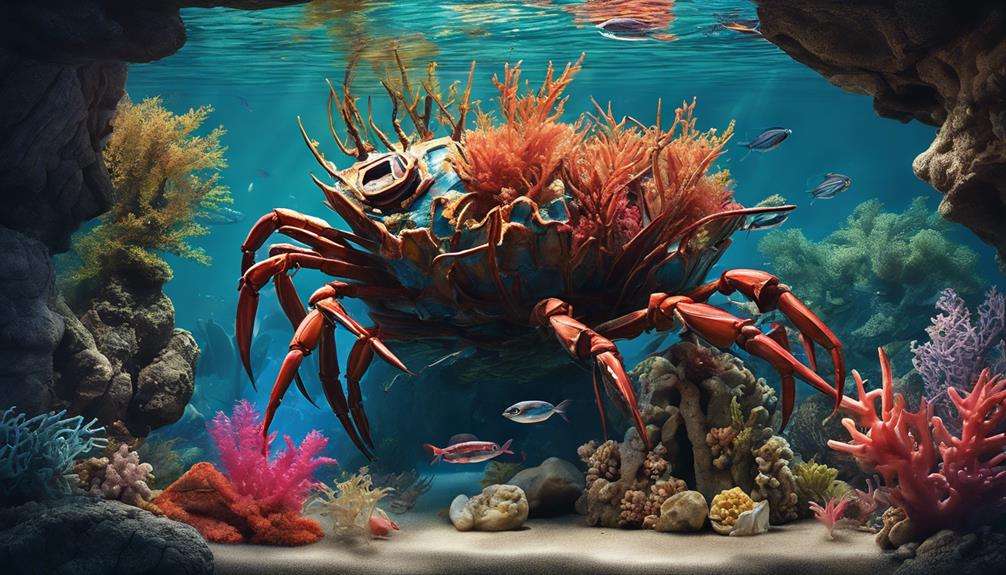
When creating a specialized environment for exotic crustaceans, it's crucial to provide proper hiding spots such as caves and driftwood. These shelters play a vital role in allowing crustaceans to camouflage themselves and feel secure in their surroundings.
Shelter for Camouflage
How can specialized hiding spots enhance the well-being and natural behaviors of exotic crustaceans in a tank environment?
- Camouflage: Hiding spots like caves and plants allow crustaceans to blend in with their surroundings, providing security and reducing stress.
- Security: Rocks, driftwood, and other hiding spots offer areas for rest, molting, and refuge, mimicking their natural habitats.
- Behavioral Enrichment: Proper hiding spots encourage natural behaviors such as hunting, exploring, and seeking shelter, promoting overall well-being and health in exotic crustaceans.
Natural Habitat Replication
Specialized hiding spots play a crucial role in replicating the natural habitats of exotic crustaceans within a tank environment, promoting their well-being and natural behaviors. When creating these habitats, consider incorporating tank decorations such as driftwood, rocks, caves, and plants to mimic the diverse environments where these crustaceans originate.
Providing structures like tunnels, crevices, and overhangs offer essential shelter and security, ensuring the crustaceans feel safe and stress-free. Utilizing a variety of textures and materials in the tank decorations is key, as it offers diverse hiding options suitable for different species.
To enhance the environment further, include live plants or artificial decor that not only provide cover but also enrich the overall tank setting for the exotic crustaceans' well-being.
Feeding and Nutrition Guidelines
To meet the nutritional needs of exotic crustaceans in a specialized environment, provide a varied diet consisting of vegetables, fruits, and proteins. When feeding these unique creatures in your tank, consider the following guidelines:
- Diverse Diet: Offer a mix of vegetables like zucchini, carrots, and leafy greens, along with fruits such as berries or melon to ensure they receive essential vitamins and fiber.
- Protein Sources: Incorporate proteins like shrimp, fish, or specialized crustacean pellets to support their growth and overall health.
- Calcium-Rich Foods: Supplement their diet with calcium sources like cuttlebone or crushed eggshells to aid in their exoskeleton health and facilitate the molting process.
Maintaining Optimal Humidity Levels
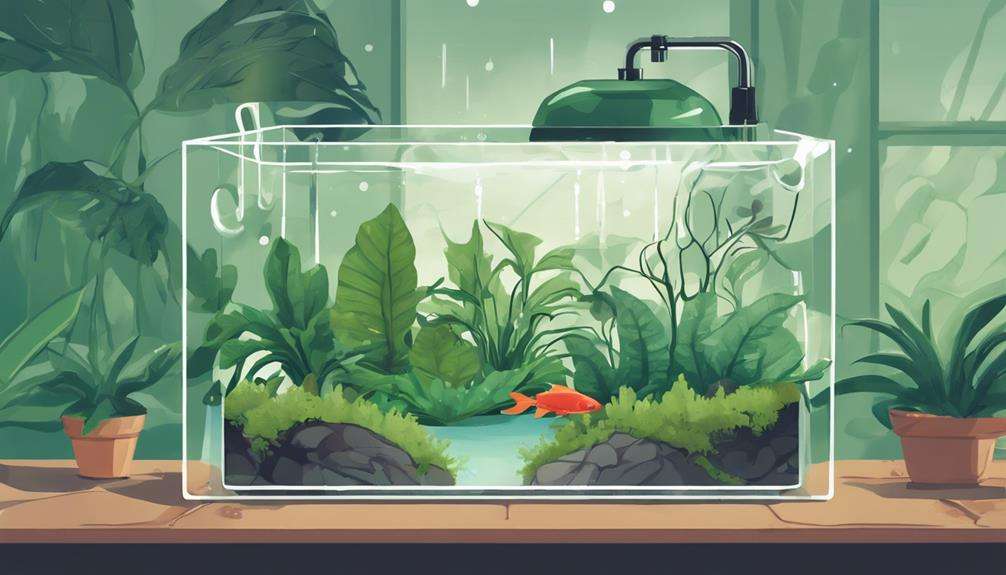
Maintain the optimal humidity levels required for exotic crustaceans like red-clawed crabs within the range of 70% to 80%. To ensure the ideal environment for these creatures, use a hygrometer to accurately monitor the humidity levels in the tank.
Consistent monitoring is essential to make any necessary adjustments promptly. To maintain proper humidity levels, mist the tank with dechlorinated water as needed. This practice helps simulate the natural habitat of red-clawed crabs, preventing potential health issues associated with inadequate humidity.
Additionally, provide hiding spots and moist substrate within the tank to help retain humidity effectively. Failure to uphold the recommended humidity levels can lead to stress, molting difficulties, and respiratory problems in exotic crustaceans.
Handling Potential Health Issues
Is it essential to closely observe the behavior, appetite, and shell condition of your exotic crustaceans for early detection of potential health issues? Monitoring crab behavior is crucial in maintaining their health and well-being. Here are key points to consider:
- Behavioral Changes: Watch for any unusual behaviors such as lethargy, aggression, or excessive hiding, as these can indicate stress or illness.
- Appetite: Keep track of your crustaceans' eating habits. A sudden loss of appetite or refusal to eat could signal an underlying health issue.
- Shell Condition: Regularly inspect their shells for any abnormalities like discoloration, lesions, or signs of damage. Healthy molting is essential for their growth and overall health.
Creating a Suitable Breeding Environment
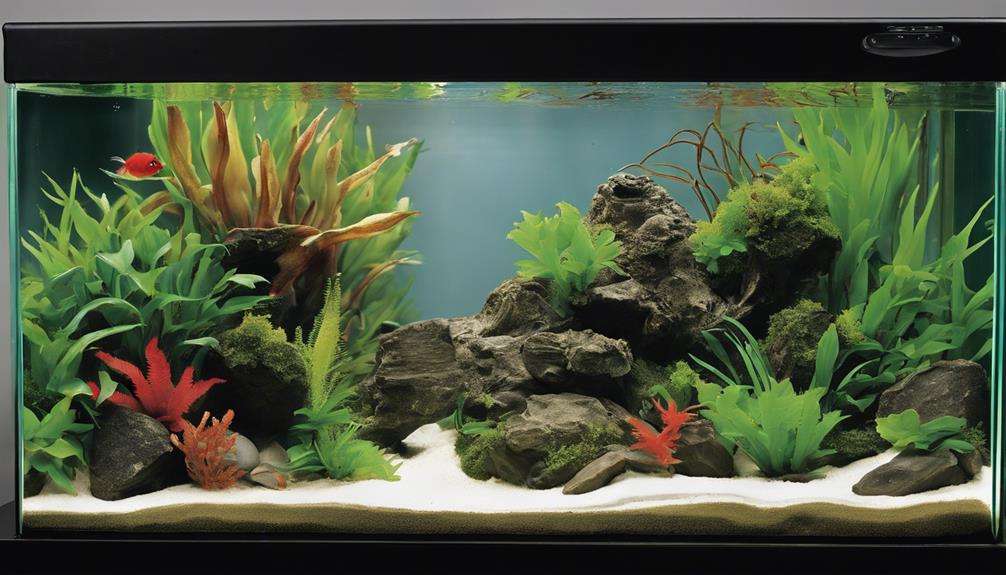
Maintain water temperature within the range of 75-85°F to create optimal breeding conditions for exotic crustaceans.
Provide adequate hiding spots and caves for breeding pairs to establish a sense of security during the breeding process.
Offer a balanced diet rich in proteins and essential nutrients to support successful breeding outcomes.
Optimal Water Conditions
To create an ideal breeding environment for exotic crustaceans, precise monitoring and maintenance of water conditions are crucial. When focusing on hermit crabs, follow these guidelines:
- Maintain a water temperature between 75-82°F to support breeding activities and overall health.
- Ensure the pH level falls within the range of 7.5 to 8.5, providing a suitable environment for breeding success.
- Keep the salinity level between 1.005-1.010, mimicking the natural brackish water conditions that hermit crabs thrive in.
Proper Hiding Spots
In establishing an optimal breeding environment for exotic crustaceans, the provision of multiple hiding spots plays a vital role in reducing stress and fostering breeding behavior. Hiding spots such as caves, rocks, and driftwood create dark and secluded areas where crustaceans can retreat and feel secure during breeding periods.
Live plants or artificial foliage can also offer natural hiding spots, providing a sense of privacy for the crustaceans. It's essential to strategically place these hiding spots to mimic the natural environment of the exotic crustaceans, encouraging their breeding instincts.
Adequate Food Supply
To establish a suitable breeding environment for exotic crustaceans, it's crucial to provide a varied diet comprising vegetables, fruits, proteins, and calcium-rich foods to meet their nutritional requirements.
When caring for captive-bred animals, consider the following:
- Offer live or frozen foods like bloodworms, brine shrimp, daphnia, and small fish to simulate their natural diet.
- Ensure a balanced mix of nutrients to support breeding pairs' health and reproductive success.
- Monitor feeding habits closely and adjust the diet as needed to maintain optimal health and breeding conditions.
Ensuring a Stimulating Enrichment Setup
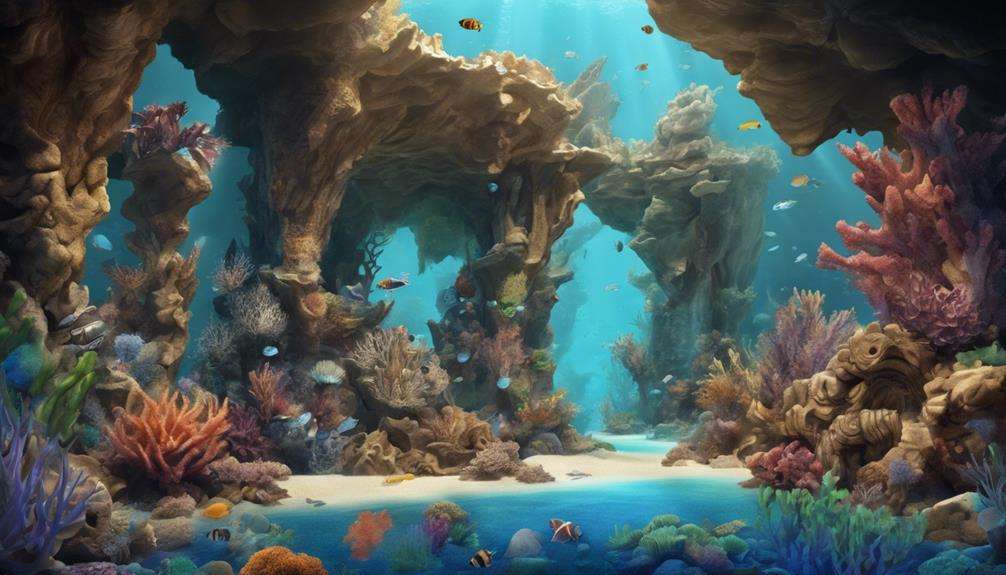
Incorporate a diverse range of textures, materials, and interactive elements to create a stimulating enrichment setup for exotic crustaceans. Provide rocks, branches, and shells for climbing, exploring, and hiding, mimicking their natural habitat.
Introduce puzzle feeders and foraging toys to engage their cognitive abilities and physical prowess, promoting a healthy lifestyle. Floating platforms, tunnels, and interactive elements encourage natural behaviors, enhancing their overall well-being.
Rotate and rearrange these items regularly to prevent habituation and maintain interest. Vary water depths, flow patterns, and substrate types to create a dynamic and engaging environment for these exotic crustaceans.
Frequently Asked Questions
How Do Crustaceans Adapt to Their Environment?
You adapt to your environment through specialized features like chelipeds for feeding and defense. Habitat preferences influence your adaptations, from gills for water-dwelling crabs to lung-like structures in land crabs. Antennae and eyestalks aid in sensing and hunting.
How Are Crabs Adapted to Their Environment?
You're amazed at how crabs thrive in their environment. Their adaptations include gills for water dwellers and lung cavities for land crabs. With chelipeds for hunting and defense, their antennae and eyestalks give them a tactical edge.
Why Are Crustaceans Important to the Environment?
In Crustacean habitats, these creatures are key players in maintaining ecosystem balance. They recycle nutrients, support food chains, and indicate environmental health. Their sensitivity to changes underlines the importance of preserving these vital aquatic creatures for overall ecosystem well-being.
How Do Crustaceans Give Back to the Ecosystem?
In the ecosystem, crustaceans give back by providing essential services like nutrient cycling, controlling prey populations, maintaining water quality, and supporting biodiversity. Their interactions with other organisms contribute to the balance and stability of aquatic environments.
Conclusion
In conclusion, by carefully attending to the specific needs of exotic crustaceans and creating a specialized environment tailored to their requirements, you can ensure the optimal health and well-being of these unique creatures.
With meticulous attention to detail and proper maintenance, you can provide a habitat that promotes their natural behaviors and longevity.
Remember, creating a suitable environment for exotic crustaceans is a rewarding endeavor that requires dedication and expertise to ensure their thriving existence.
